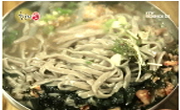본 논문의 목적은 정선이 그린 정호 정이고사도의 시각적 특징과 조선시대 이정고사도의 전개양상, 그리고 정 선의 제작방식을 규명하는 것이다. 북송대 유학자였던 정호와 정이는 정반대...
http://chineseinput.net/에서 pinyin(병음)방식으로 중국어를 변환할 수 있습니다.
변환된 중국어를 복사하여 사용하시면 됩니다.
- 中文 을 입력하시려면 zhongwen을 입력하시고 space를누르시면됩니다.
- 北京 을 입력하시려면 beijing을 입력하시고 space를 누르시면 됩니다.
https://www.riss.kr/link?id=A99874137
- 저자
- 발행기관
- 학술지명
- 권호사항
-
발행연도
2011
-
작성언어
Korean
- 주제어
-
등재정보
KCI등재
-
자료형태
학술저널
-
수록면
239-275(37쪽)
- 제공처
- 소장기관
-
0
상세조회 -
0
다운로드
부가정보
국문 초록 (Abstract)
본 논문의 목적은 정선이 그린 정호 정이고사도의 시각적 특징과 조선시대 이정고사도의 전개양상, 그리고 정 선의 제작방식을 규명하는 것이다. 북송대 유학자였던 정호와 정이는 정반대의 성격을 지닌 한 살 터울의 형 제이자, 도학의 새로운 흐름을 열었던 지적 동반자였다. 그들은 강한 개성과 독특한 일화를 남긴 선학으로, 혹 은 주자에게 절대적 영향을 준 신유학의 창시자로 기억되었다. ‘방화수류(傍花隨柳)’, ‘정문입설(程門立雪)’, ‘ 부강(涪江)’ 등의 제재로 표현된 이정고사도는 정선이 그린 송대성현의 고사인물 중에서 제재와 작품수가 가 장 많았다. 정선이 그린 이정고사도의 형식은 자연배경에 고사상이 배치된 산수인물화이며, 기법은 남종화법을 근간으로 한 수묵담채화였다. 그의 다른 고사인물화와 마찬가지로 고사의 일화를 도해할 때 조선중기의 전통을 계승한 산수인물형식을 도입해서 풍류와 낙도(樂道)를 누리는 정호 정이상을 완성했다. 16세기에는 정호, 정이가 도 학의 계승자들과 함께 화첩이나 병풍에 장첩되었는데, 그림의 주인공들은 도통계보의 인명도설에 포함된 인 물들이었다. 정선과 같은 시기에 활동한 어유봉의 <병화십찬>을 통해 고사일화형식을 갖춘 송대성현의 고사 도가 18세기 전반에 이미 정착되었음을 알 수 있다. 정선의 그림에 표현된 정호와 정이는 권위를 내세운 관료도, 위엄을 갖춘 지도자도 아니었다. 분석적이고 논 리적인 유학자였지만, 때로는 자연을 즐기고 때로는 세상사에 초연할 줄 아는 처사이자 참진리를 추구하는 진 정한 지식인이었다. 정선은 정호, 정이의 고사를 해석하면서 자신만의 화법으로 새로운 화면을 창안했다.
다국어 초록 (Multilingual Abstract)
This thesis is to identify the visual characteristics of Jeon Seon’s gosa paintings of JeongHo and JeongE. JeongHo and JeongE were Confucians during the Northern Song dynasty, brothers who were born only a year apart, and intellectual companions w...
This thesis is to identify the visual characteristics of Jeon Seon’s gosa paintings of JeongHo and JeongE. JeongHo and JeongE were Confucians during the Northern Song dynasty, brothers who were born only a year apart, and intellectual companions who helped open a new chapter for Taoism. They are remembered as founders of a new Confucianism, who gave absolute influences to Zhu xi as well as pioneering scholars with spirited personalities whose exploits are well known and without comparison. JeongEGoSado, which is composed of a number of subjects such as banghwasuryu, jeongmunipseol, and bugang, It is also the kind of painting that he produced in the biggest quantities. The genres of JeongHo and JeongEGoSaDo as painted by Jeong Seon, belong to the tradition of SanSui figurative painting, featuring gosa seated within a natural background, using softly colored water and ink painting based on the NamJong style (a southern school of Chinese painting). Like other gosa figurative painting by JeongSeon, in which he depicted the daily lives of gosa, he incorporated the SanSui figurative painting techniques that developed from the traditions of the mid-Joseon period, and represented JeongHo and JeongE, who were known to have enjoyed pungryu and nakdo. According to literature, before Jeong Seon the gosa paintings of JeongHo and JeongE were known to have predominantly been incorporated within SeongHyeonGoSaCheop. In the 16thCentury, JeongHo and JeongE featured within picture books or wall screens along with the followers of Confucian from that time. In this way the main characters depicted in these paintings were from an Confucian Diagrams. ByeongHwaSipChan by EoYu-bong – a painter from the same period as Jeong Seon – helped ensure that gosa painting of saints from the Song dynasty, employing SanSui figurative painting techniques, became established in the early 18thCentury. As depicted in Jeong Seon’s paintings, JeongHo and JeongE appeared as neither powerful officials nor majestic leaders. Even though they were analytical and logical Confucians, we are reminded that they knew how to find amusement within nature, and to find relief from everyday worldly concerns as genuine intellectuals pursuing fundamental truths. Jeong Seon created a new style of his own while interpreting the old legends of JeongHo and JeongE.
목차 (Table of Contents)
- <국문 요약>
- Ⅰ. 머리말
- Ⅱ. 제재에 사용된 二程故事
- Ⅲ. 정선 이정고사도의 양식적 특징
- Ⅳ. 송대성현 고사의 형성과 정선의 이정고사도
- <국문 요약>
- Ⅰ. 머리말
- Ⅱ. 제재에 사용된 二程故事
- Ⅲ. 정선 이정고사도의 양식적 특징
- Ⅳ. 송대성현 고사의 형성과 정선의 이정고사도
- 1. 도학의 계보와 이정고사
- 2. 典故化된 송대성현과 그 시각화
- Ⅴ. 맺음말
- <참고 문헌>
- <작품 목록>
- Abstract
동일학술지(권/호) 다른 논문
-
문학 : 박세당(朴世堂)의 개방적(開放的) 학문관(學問觀) 연구(硏究)
- 한서대학교 동양고전연구소
- 주영아 ( Young Ah Joo )
- 2011
- KCI등재
-
문학 : 가부장제하 여성으로서의 삶과 좌절되는 행복 -<소현성록>의 화부인을 중심으로-
- 한서대학교 동양고전연구소
- 정선희 ( Sun Hee Jeung )
- 2011
- KCI등재
-
문학 : 고전시가의 텍스트 변이를 활용한 문화 읽기 교수 학습 방안 -<계녀가>류 가사를 중심으로-
- 한서대학교 동양고전연구소
- 최은숙 ( Eun Sook Choi )
- 2011
- KCI등재
-
문학 : 경주 지역 설화의 양상과 특성 -특히 『한국구비문학대계』와 『삼국유사』를 중심으로-
- 한서대학교 동양고전연구소
- 최천집 ( Cheon Jip Choi )
- 2011
- KCI등재





 eArticle
eArticle




